36+ Sample Research Budgets
-
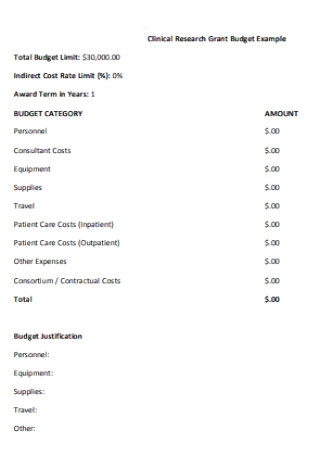
Clinic Research Grant Budget
download now -
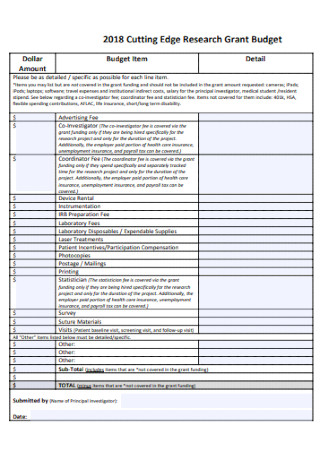
Research Grant Budget Template
download now -
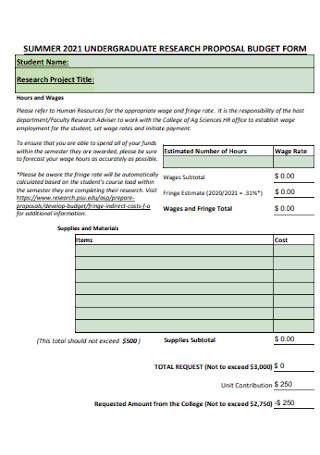
Undergraduate Research Budget Form
download now -
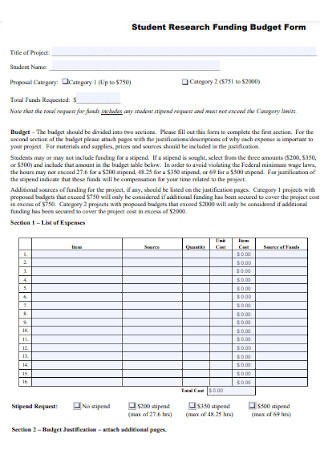
Student Research Funding Budget
download now -
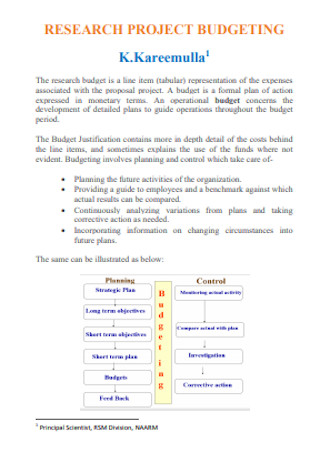
Research Project Budget Template
download now -
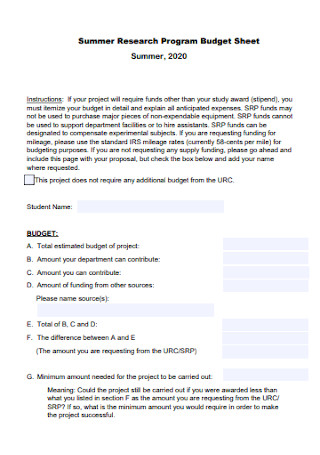
Research Program Budget Sheet
download now -
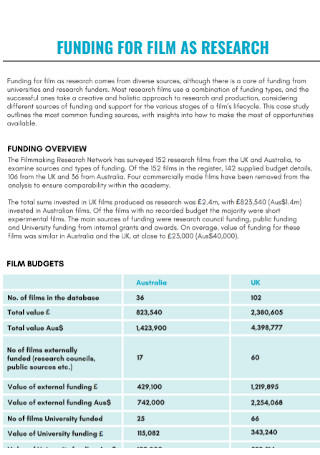
Film Research Budget Template
download now -
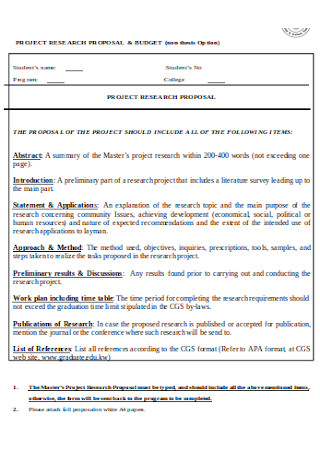
Project Research Proposal Budget
download now -
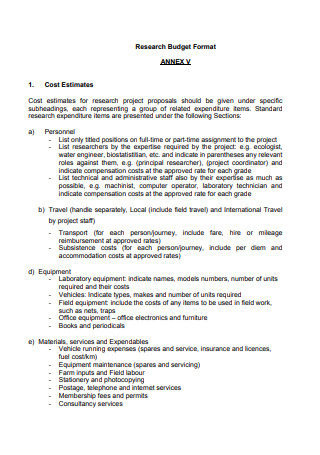
Research Budget Format
download now -
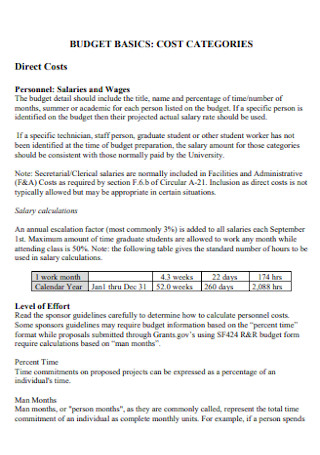
Basic Research Budget Template
download now -
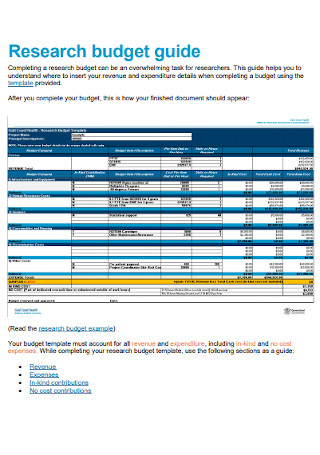
Health Service Research Budget
download now ] -
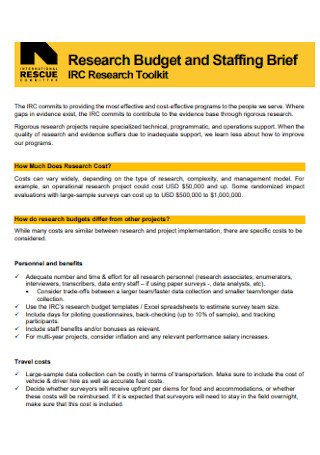
Staffing Research Budget
download now -
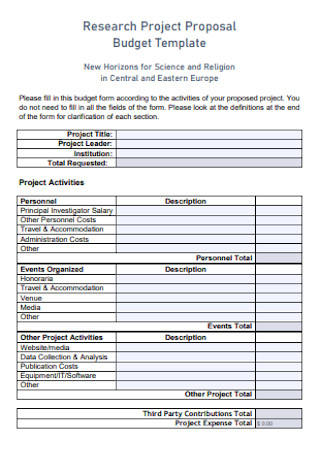
Simple Research Budget Template
download now -
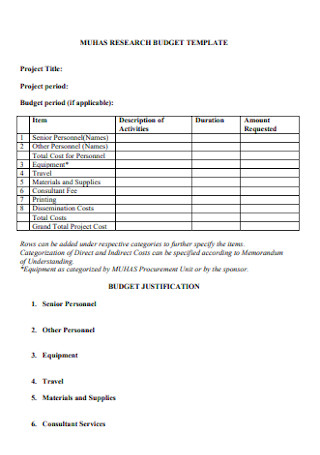
Formal Research Budget Template
download now -
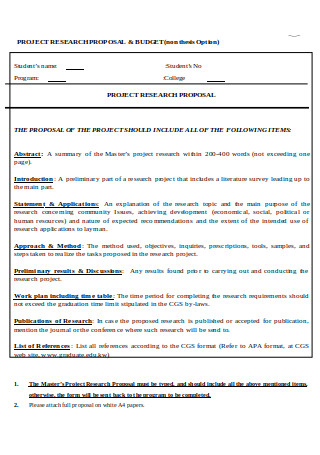
Research Proposal and Budget
download now -
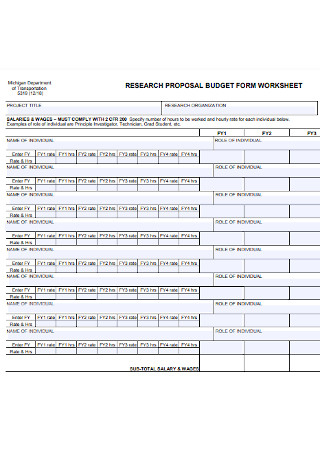
Research Budget Form Worksheet
download now -
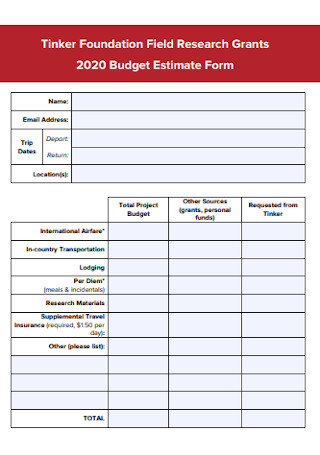
Foundation Field Research Budget
download now -
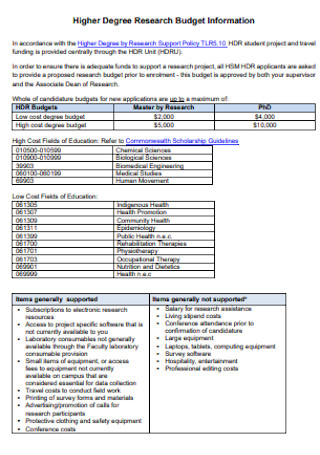
Higher Degree Research Budget
download now -
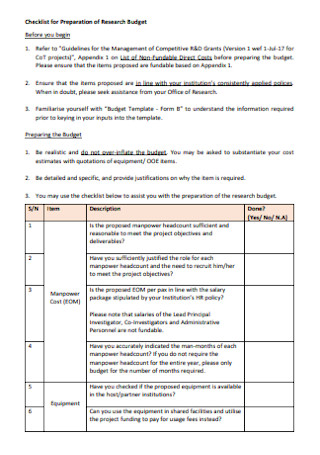
Checklist for Preparation of Research Budget
download now -
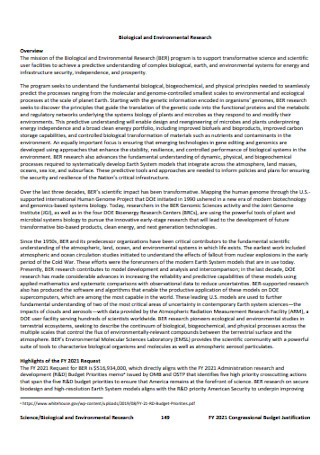
Biological and Environmental Research
download now -
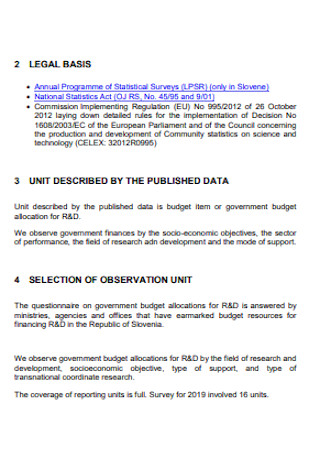
Governament Research Budget Template
download now -
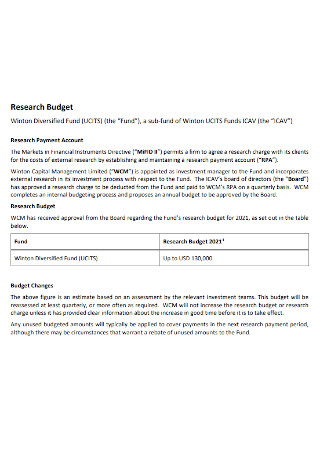
Research Payment Budget Template
download now -
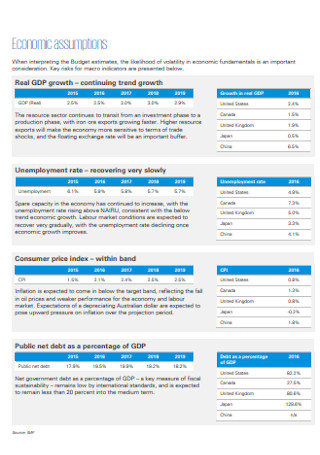
Standard Research Budget Template
download now -

Research Development Budget Template
download now -
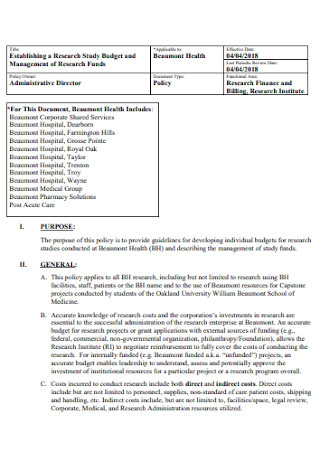
Research Study Budget
download now -

Undergraduate Research Proposal Budget
download now -
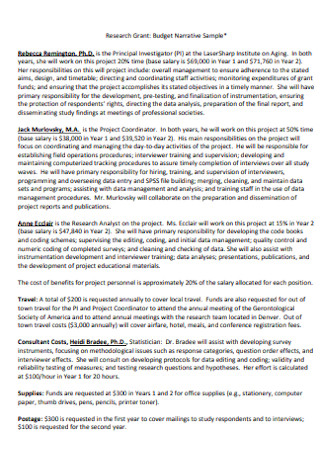
Sample Research Grant Budget
download now -
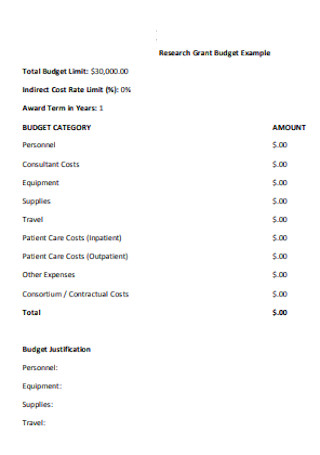
Research Grant Budget Example
download now -
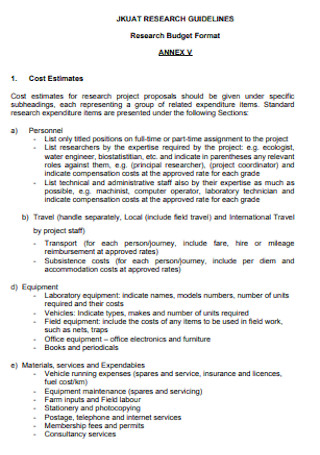
Research Budget Format
download now -
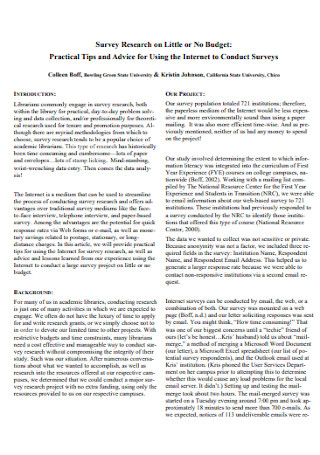
Survey Research Budget Template
download now -
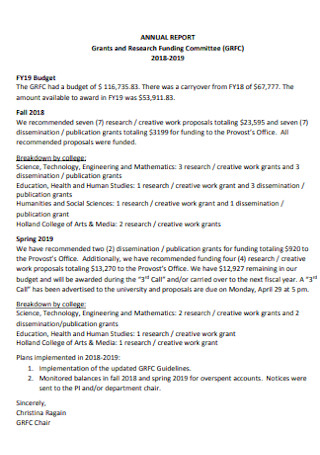
Annual Research Budget Template
download now -
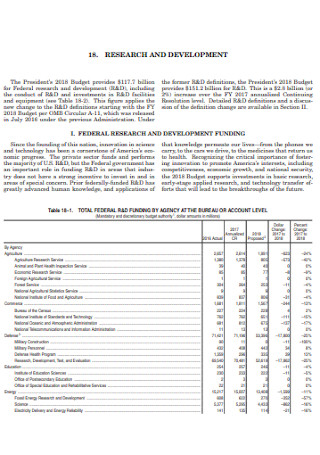
Research Development Budget Example
download now -

Sample Project Research Budget
download now -
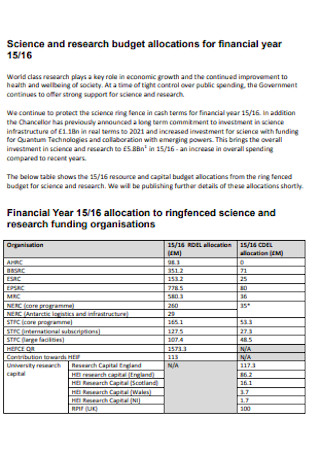
Science and Research Budget Template
download now -
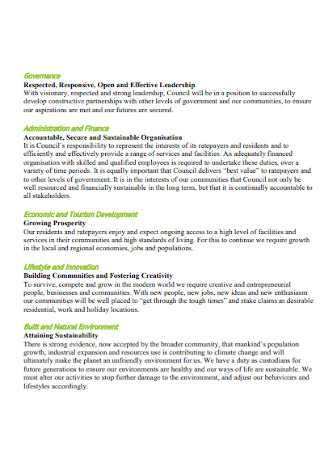
Annual Business Plan Budget
download now -
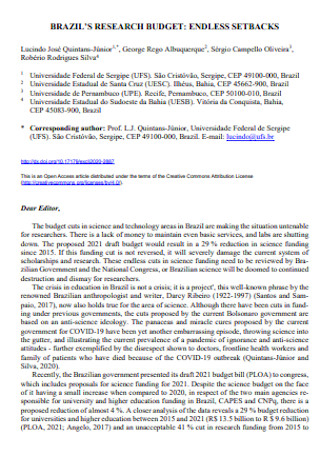
Formal Research Budget Example
download now -
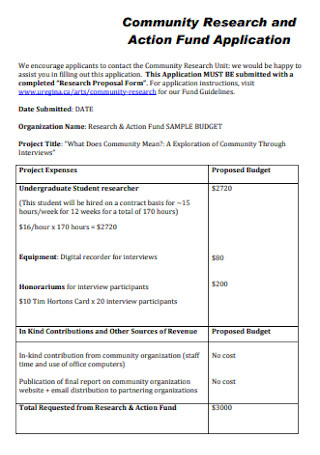
Community Research Budget Template
download now
FREE Research Budget s to Download
36+ Sample Research Budgets
What Is a Research Budget?
The Components of a Complete Research Budget
How to Set a Research Budget
FAQs
Why is a research budget important in a grant application?
What are the types of budgeting schemes?
How much is the standard research project grant amount?
What Is a Research Budget?
A research budget showcases the allocated expenses in research, and it is usually represented in tables or charts. Oftentimes, the research budget is discussed twice: (1) it is used to discuss the overall budget plan for a grant or research proposal in case an organization approves of funding the research budget, and (2) it displays the associated expenses involved in a finished research, particularly in showing how the budget allocation went.
Statista reported that in the 2018 worldwide research and development spending, 2.8% of it was allocated to the aerospace and defense sector.
Meanwhile, Stellenbosch University suggests that a complete research budget should cover five categories—personnel, travel, equipment, materials, and others.
Why Is a Research Budget Important?
The research budget is essential to make it easier in considering a funding application. Of course, grantors and funders would want to know if the money they give will actually be used properly for research purposes. Hence, setting a tabular representation of the research costs through the research budget will be useful for reference. More so, setting a research budget shows how detailed and well-prepared a research is because it also displays the overview of a project.
On another note, research itself is vital to be budgeted. In fact, global research and development spending happens annually. And in 2018 itself, 2.8% of it was allocated for the aerospace and defense department. That itself shows how funding for research is not useless, especially when it concerns worldwide. And lastly, a research budget brings justification of how money was spent or used in research. There will likely be receipts, calculations, and labels in the research budget section to prove the allocation of money.
The Components of a Complete Research Budget
You already know about a research budget’s definition and importance. But what about what the said budget contains? According to Stellenbosch University, it is said that a complete research budget must tackle five main categories. And they consist of the following:
How to Set a Research Budget
Since you are already familiar with a research budget’s standard components, it gets easier for you to create the research budget itself. When you have a purpose to start a research and propose it, you will likely create the research budget anyway. Thankfully, it is not as complicated as you might think, especially when samples are already provided for you. So to make sure your research budget is correct, be sure to follow these essential steps:
Step 1: Brainstorm All Research Activities
First of all, you need to determine what your research activities will be. Planning is linked to a research’s first step anyway. So this part should cover how the overall program looks like from the research’s step-by-step scheme, the people involved in the research, and what type of research or analysis will be used in the study. An itemized list will do just fine as long as you can enumerate those activities to do in research. After that, arrange the steps according to their timeline or sequence.
Step 2: Consider the Rules and Regulations
Research has corresponding rules. For example, your school would have its own regulations on what is acceptable for a thesis budget. More so, there are different rules associated with funding depending on the standards of grantors or funders. So if you are not familiar with those regulations yet, consider reading them first. You will eventually adjust your research budget’s content on what is allowed or prohibited. Otherwise, passing that budget might lead to an automatic rejection. In fact, showing that you complied with the rules is already a good impression among assessors and funders to approve your work.
Step 3: Insert the Associated Costs for Each Item
On those activities you enlisted that go according to the rules, you will place the estimated costs for each item next. This part is where your research budget’s concern lies the most. Estimate reasonable costs per item. For example, if you are going to provide questionnaires to a hundred respondents, you would estimate the budget for printing of questionnaires, how much time it would take, etc. However, you cannot just guess how much the costs are because it also requires investigation in doing so.
Step 4: Download a Sample Research Budget
The process is made easier for you when you use the sample research budget templates listed above. With a sample template, every crucial part of the research budget’s elements is laid out for you. Your only concern is to insert what makes your research budget different. For example, you already have categories divided ahead from the components of a research budget, which you already learned earlier. Hence, you just write down the details per category from the itemized list, associated costs, and many more.
Step 5: Organize Your Data and Format
Enjoy the sample research budget’s customizable features since you can decide on a different format, design, and overall data. Maybe you want to create a different set of categories that is not similar to the standard components discussed before. An example is when you create a table for budget items, number of items, cost per item, total costs, in-kind costs, and notes. Moreover, you may change the format from a PDF or MS Word file. The same goes for deciding if the budget sheet should be printed or saved for an email only.
Step 6: Justify Your Research Budget
Last but not least, learn to justify the data you have added to your research budget. For example, why do you need to be funded for your research? And how did you manage to get such figures in the first place? Expect a budget justification to be crucial so you can get support from teachers, grantors, and many more to continue your research. If you can explain in detail but direct to the point about the need for such a budget to ace a study, approval is just a call away. Nevertheless, you only submit your research budget when you are confident with the results and after you have evaluated your work. That is if there is any mistake that has not been changed yet.
FAQs
Why is a research budget important in a grant application?
The research budget displays the quantitative data of a proposed financial plan for upcoming projects and researches. And it is important in a grant application because grantors would want a thorough review of what they will be funding for in the first place. So if a research budget can demonstrate the needed research costs clearly, predict appropriate estimated expenses, and explain a well-thought-out plan in detail, then there is a big chance for the grant to be approved. Also, grantors appreciate the research budget since it also defines accountability in the project.
What are the types of budgeting schemes?
It is known that there are four standard budgeting schemes. And they consist of the following:
- Incremental budgeting – this form of budgeting tackles a previous year’s actual figures while you add or subtract a percentage to answer the acquired budget of the current year. Also, this is the simplest and most common form of budgeting scheme.
- Activity-based budgeting – the next example focuses on getting the number of inputs necessary to provide the outputs and targets implemented by an organization. A common example is when a business should start recognizing the necessary tasks to take first that will meet the sales target until the costs for each activity to do will be determined.
- Value proposition budgeting – another budgeting scheme answers the reason for inputting the amount you estimated in a budget, how a value outweighs the expenses, or even why the budget should be justified. And as much as possible, do not include irrelevant expenditures in this section.
- Zero-based budgeting – lastly, this budgeting plan assumes that every department in a budget is zero and should be rebuilt from the very beginning. But, the expenses should be justified. And this strategy is helpful when you need costs quickly, particularly if a business undergoes an economic downturn.
How much is the standard research project grant amount?
As of 2018, research project grants have an average of $535,239 in current dollars and $292,581 in constant dollars. That is, according to the National Institutes of Health (NIH).
Rest assured, there are many funders and grant plans to help you fund for research purposes, particularly when your objectives and causes are brilliant ideas. But, you have to work hard on how to divide the budget and to track the spending appropriately to ensure a successful funding application. And that is just what a research budget can help you achieve. Start breaking down your research costs now!
